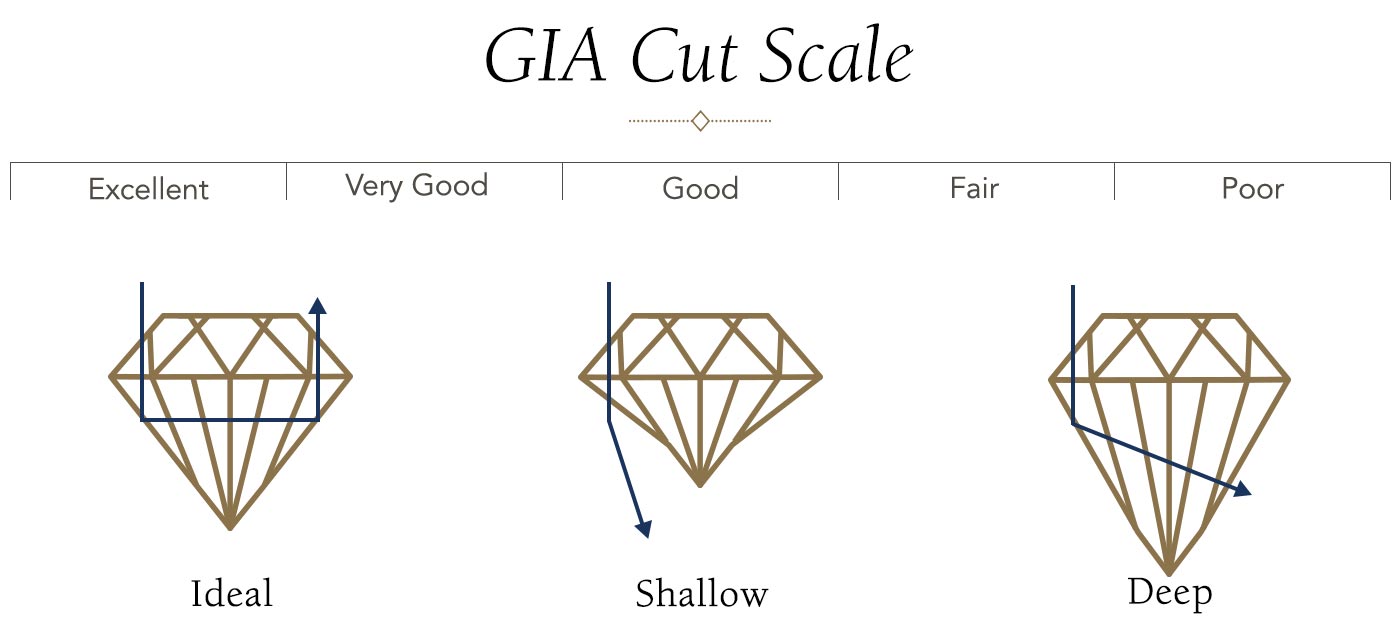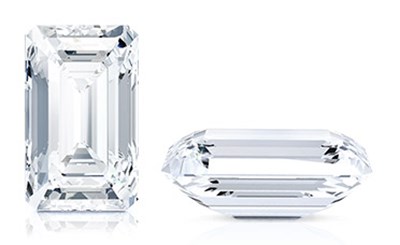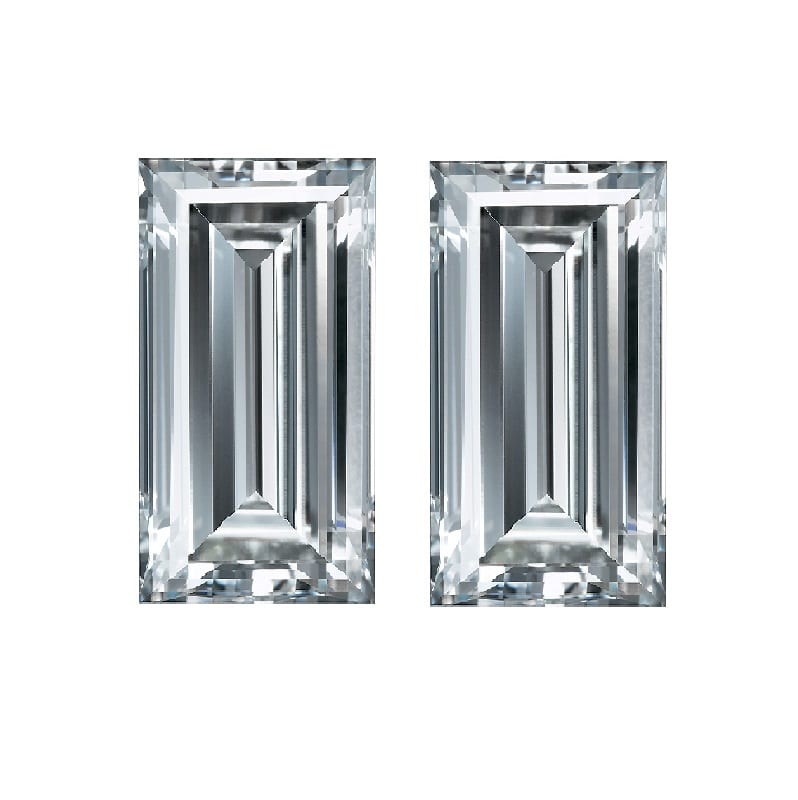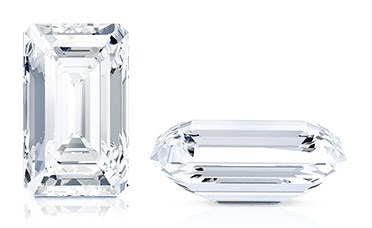Welcome back to the Diamonds Hatton Garden blog where we bring you the latest insights from our Hatton Garden jewellers. Following on from our guide to the modified brilliant cut, we look to continue with our next entry into our series onto diamond cuts and look at what is a step cut diamond, examining its history and how to choose a step cut diamond.
What is a diamond cut?
Before a diamond cutter chooses the specific cut of a diamond, they will analyse the rough diamond and note its unique inclusions and carat weight which impact the specific cut of the diamond. In most cases, a diamond will be octahedra, making it ideal for a round brilliant cut. Why is this? A rough diamond will be cut and polished into two faceted gems without it losing too much carat weight thus making the cutting more effective and wasting less of the rough. Therefore, a diamond cut determines the diamond’s fire, brilliance and scintillation levels; it’s the technical aspects used to maximise the diamond’s brilliance.

What is a Step Cut Diamond?
A step cut is a term that refers to a selection of diamonds that are cut in a specific way of which the most well-known step cut is the emerald cut. A step cut diamond is usually a square or rectangular shape with facets arranged as parallel lines to one another on all four sides. The facets tend to be larger than in brilliant cut diamonds and because of their arrangement, they look like steps.

The History of Step Cut Diamonds
The step cut is one of the oldest diamond shapes and can be traced back to the table cut of the 1500’s. Due to its use in shaping emerald gemstones the name changed around the 1920s and became referred to as the emerald cut.. Step cut diamonds grew in popularity wildly in the late 1920s and early 1930s with the Art Deco movement that swept the world. Bold geometric lines and stylised forms characterised the movement that appeared in jewellery, architecture and design.
Just prior to this period, the Asscher cut was designed in 1902 by famed diamond cutter Joseph Asscher of Holland. Asscher obtained a patent for his cut to protect from others replicating it, making it the first patented diamond cut ever. His company the Asscher Diamond Company held the patent until the start of the Second World War.
Emerging at the same time, the baguette cut was very much a departure from the round cut corners that had been popular in jewellery for centuries. With few facets, straight lines, and sharp corners, baguette cut diamonds tested the skill of the cutter as the cut accentuated flaws more than any other of the traditional step cuts. required the highest quality craftsmanship as their simplicity allowed for flaws to be seen much easier than in other cuts.
Types of Step Cuts
Emerald Cut
The most well-known step cut is the emerald cut. Named after the gemstone it was created for, the emerald cut has a long, rectangular shape and truncated corners that form an octagonal look. An emerald cut diamond is often considered to have a very refined look due to its clean lines. Learn more about emerald cut engagement rings.

Asscher Cut
Second in popularity to the emerald cut is the Asscher cut, which can also be referred to as a square emerald cut. The Asscher cut diamond looks differs from the Emerald cut in as it has a more square shape and is less rectangular. The Asscher cut features large step cut facets and a high crown giving it a unique windmill appearance when viewed from the top. Typically the Asscher cut produces more brilliance than emerald cuts because there’s more depth to the stone. Learn more about Asscher cut engagement rings.

Baguette Cut
Baguette cut diamonds are typically used as side stones or lined up in a sparkling row in a setting. The rectangular shape has fewer facets than the emerald cut and looks thinner. With its pointed edges, the diamond suits pave settings and is often used to accentuate larger centre stones in a diamond engagement ring as, on their own, they do not tend to produce much sparkle.

Tips for Choosing a Step Cut Diamond
As step cuts have a large pavilion or crown (the viewing window into the stone) colour, cut and clarity are more important than in round brilliant diamonds. We recommend choosing higher clarity grades of VS2 and higher to ensure an eye clean look to the diamond.
Whilst there is no official cut grading for step cuts, it is important to choose a diamond that possesses excellent symmetry as, due to the shape, it is noticeable if the proportions do not look right – we recommend Excellent (EX) or Very Good (VG).
Finally, in terms of colour you can be more forgiving with a step cut and look for colours around the E or F grade as the beauty in this cut of diamond is its clean look.
Step cuts are gorgeous choices for diamond engagement rings and when combined with a pave band or halo settings, emerald cut and Asscher cut diamond engagement rings create an eternal, classic look that is simply beautiful.
At Diamonds Hatton Garden our team of family-run jewellers have assisted generations of clients to find their perfect large diamond engagement ring. Contact our team via harel@diamondshg.co.uk or call +44 7951 060238 for more information and to arrange your appointment. Alternatively, explore our selection of fancy coloured yellow diamonds for sale and if you are looking to buy fancy Pink diamond jewellery contact our team as well as viewing our latest Diamond earrings in Hatton Garden. Or contact our team to sell diamonds in London.

